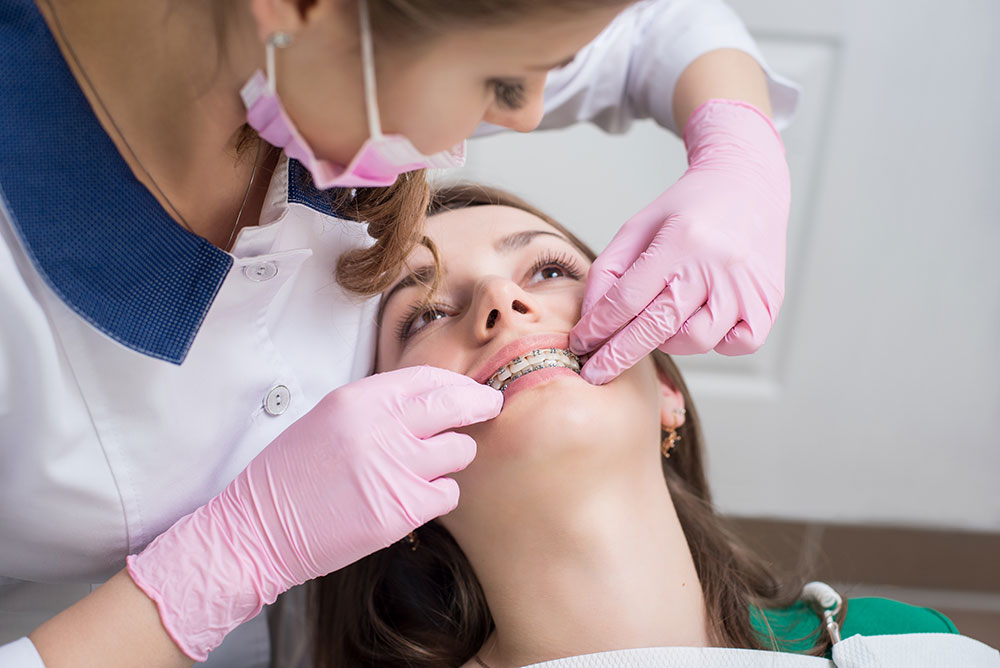The Basic Principles Of Legacy Orthodontics
The Basic Principles Of Legacy Orthodontics
Blog Article
The 7-Second Trick For Legacy Orthodontics
Table of ContentsFascination About Legacy OrthodonticsThe smart Trick of Legacy Orthodontics That Nobody is DiscussingThe Ultimate Guide To Legacy OrthodonticsThe Definitive Guide to Legacy OrthodonticsFascination About Legacy Orthodontics
In addition, we offer adjustable treatment schedules, flexible settlement alternatives and a fun, enjoyable experience.An orthodontist is a dental practitioner trained to identify, prevent, and deal with teeth and jaw irregularities. Orthodontists function with individuals of all ages, from youngsters to grownups.
Malocclusion, or misaligned teeth, can bring about dental issues, consisting of tooth degeneration, gum tissue disease, and challenging or excruciating eating. However not everybody is birthed with straight teeth. If you have a poor bite or large spaces in between your teeth, you may wish to get in touch with a dentist concentrating on orthodontic treatment.
Indicators on Legacy Orthodontics You Need To Know
( Picture Credit Score: DigitalVision/Getty Images) Orthodontists make use of dealt with and removable oral tools, like braces, retainers, and bands, to change the placement of teeth in your mouth. Orthodontic therapy is for oral abnormalities, consisting of: Misaligned teethBite troubles, like an overbite or an underbiteCrowded teeth or teeth that are as well far apartJaw misalignmentThe goal of orthodontic therapy is to improve your bite.
A healthy bite ensures you can consume, chew, and talk effectively. While you may think about orthodontists as mostly for youngsters or teens that require braces, they can remedy dental problems at any kind of age. Orthodontists go to college, dental institution, and orthodontic school. After graduation, they spend 2 or 3 years in an orthodontic residency program.
, however not all dental experts are orthodontists. They concentrate on two areas: How to correctly and securely move teeth Exactly how to appropriately lead development in the teeth, jaw, and faceOnce an orthodontist has actually finished training, they have the choice to come to be board licensed.
Legacy Orthodontics for Beginners
Misalignment, or malocclusion, is one of the most usual reason people see an orthodontist. It is genetic and is the outcome of dimension differences in between the top and reduced jaw or in between the jaw and teeth. Malocclusion leads to tooth overcrowding, a misshapen jaw, or uneven bite patterns. Malocclusion is typically treated with: Your orthodontist connects steel, ceramic, or plastic square bonds to your teeth.
Some important source individuals require a headwear to assist relocate teeth into line with stress from outside the mouth. A retainer is a customized device that keeps your teeth in location.
They're most often used on kids. They can produce extra room in the mouth without needing to draw teeth. If you have a severe underbite or overbite, you may require orthognathic surgery (additionally called orthodontic surgical treatment) to lengthen or reduce your jaw. Orthodontists utilize wires, surgical screws, or plates to support your jaw bone.
You may require to see an orthodontist if you have: Crowding or otherwise sufficient area for every one of your teethOverbite, when your upper teeth come by your bottom teethUnderbite, when your base teeth are also much forwardSpacing or concerns with gapsCrossbite, which is when your upper teeth fit behind your base teeth when your mouth is closedOpen bite or an upright space between your front base and upper teethMisplaced midline, when the center of your base and upper teeth don't line up Remedying an oral malocclusion can: Make attacking, eating, and talking easierImprove the balance of our face and your overall appearanceEase discomfort from temporomandibular joint disordersDifferent your teeth and make them easier to clean up, aiding avoid dental caries or tooth cavities It's frequently a dentist that initially notifications misaligned teeth during a routine exam.
Legacy Orthodontics Fundamentals Explained

During your very first orthodontic examination, you'll likely have: An oral examPhotos taken of your face and smileDental X-raysPanoramic (360 level) X-rays of your face and headImpressions to create molds of your teethThese tests will aid your orthodontist know how to continue with your therapy. braces. An orthodontist is a dental professional that's had training to treat your teeth and jaw
An orthodontist is focused on your bite, so something like a chipped tooth would be dealt with by a dental expert. Orthodontists are focused on your bite, or the method your teeth fit together, and the straightness of your teeth.
Ever questioned how celebrities constantly seem to have completely lined up teeth? Orthodontists are oral specialists that focus on dealing with irregularities in the teeth and jaws.
Some Known Facts About Legacy Orthodontics.
/assets/images/provider/photos/2686944.jpg)
, orthodontists have a diverse toolkit at their disposal. These reliable dental braces use a system of brackets bonded to the teeth and linked by cords.
These removable trays are custom-made to considerably change the teeth's setting. In situations of narrow jaws, palatal expanders can be used to create area for appropriate tooth alignment.
Report this page